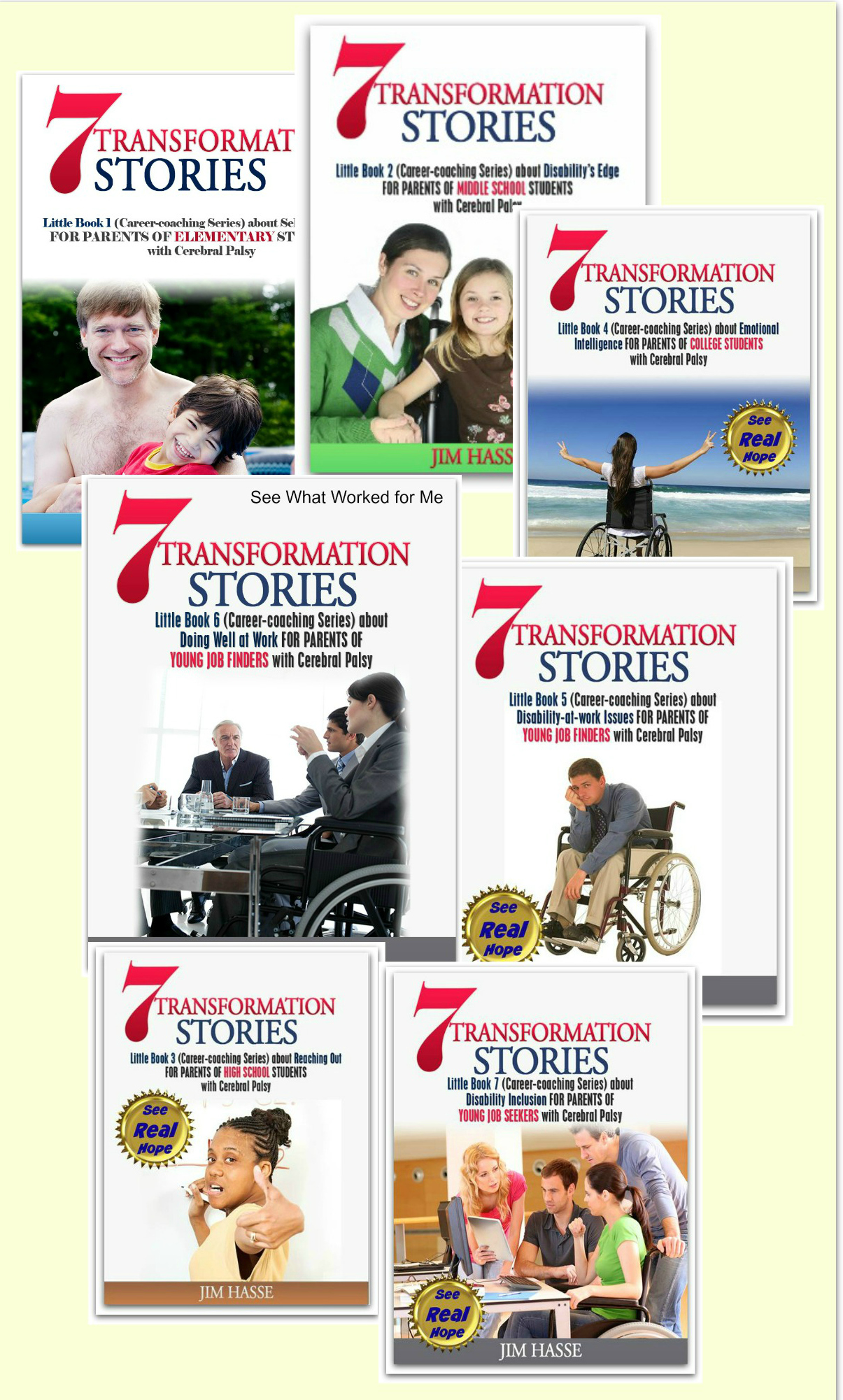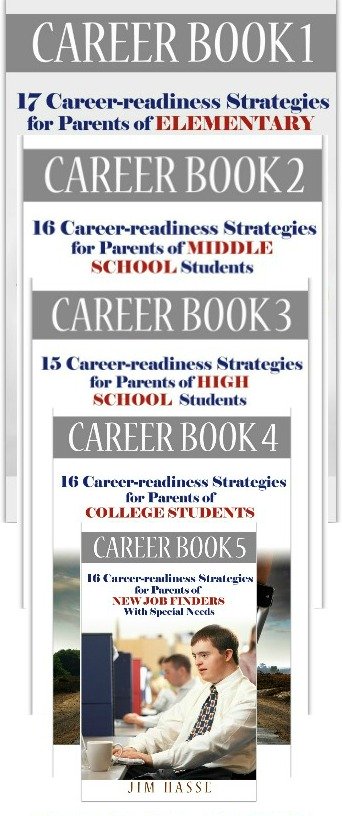Three
Career Builders
for Job Seekers with Cerebral Palsy
By Jim Hasse, ABC, GCDF, Disability Employment Expert
_________________________________________________________
Here are three career builders for the new job seeker with cerebral palsy (CP) you are currently mentoring:
- Networking effectively.
- Targeting companies.
- Dressing well.
Based on my personal experience, I’d rank these three topics near the top of my “critical things to do,” if I were about to make the big transition from school to work.
Let’s look at each one of these career builders.
Networking effectively: First of three career builders
Bettina Seidman is a well-known career management coach who has a private practice in Manhattan. She founded SEIDBET Associates in 1990 after a 20-year career in human resources management.
Seidman provides career counseling and professional coaching services to individuals and organizations in the corporate and non-profit sectors. She works with her clients as a thinking partner, providing career and job-transition counseling services such as assessment, goal setting, networking tactics, resume development, and interviewing and negotiating strategies.
Networking, Seidman says, can prove to be highly successful if it’s faithfully carried
out in a persistent and consistent manner. That's an observation you might want to pass along to your new job seeker.
In her networking scenario, the first step is to develop what she calls an "A" contact list of decision makers who already know you. "Contact them by phone, e-mail or social media," she says, "and ask who they know in your targeted field. Don't ask for a job. That's a turnoff. It puts pressure on them."
Instead of asking for a job, Seidman urges, ask about information and the network they have. To do that effectively, she recommends developing an informal script which tells what type of work your new job seeker wants to do.
"Don't expect 'A' list contacts to have their network information readily available," she cautions. "Instead, tell them you'll get back to them in three or four days for this information: name, title, address, office phone, LinkedIn.com address and e-mail. Since these are business contacts, don't ask for cell phone numbers."
The information your youngster collects by dialoguing with the "A" contact list, Seidman explains, becomes his or her "B" contact list -- people he or she doesn't know but could be helpful in a job search.
Study this “B” list, and then decide who, out of that group, could benefit you the most, if you were introduced to them through LinkedIn.com, says Seidman.
Responding effectively to an online introduction requires a second script that your new job seeker needs to write: a very short pitch about two minutes long which describes his or her career goal, experience, skills, accomplishments and education, she says.
"Put your pitch into a conversational style so you can use it to follow up on your online introduction through a telephone call as well as during job interviews and during in-person networking meetings," Seidman recommends.
Your new job seeker also needs to develop a list of questions to ask during networking or informational meetings with the contacts on the "B" list.
"Don't ask for a job," cautions Seidman. "Instead ask: What do you do? What advice do you have? How did you do this or that? What did you learn?"
Using that technique, job leads will come your way, she maintains.
According to Seidman, executive search firms, on the other hand, yield low job
search results for most people. Such firms usually concentrate on jobs with
salaries $150,000 and above. Those in that job bracket, she notes, can send
a template letter to 10 to 20 firms and follow up in a couple of weeks as part
of their job search campaigns.
She said job hunters need to realize that they are not the clients of executive
search firms. "They work on commission for companies," she points
out. "You are not the client. Be careful what you tell them."
There is no online directory for executive search firms, but "Candidate
Directory of Executive Search Firms" is available in print.

Targeting companies: Second of three career builders
"Submitting resumes online in response to job postings without a targeted approach is the worst way to search for a job," Seidman maintains.
Seidman offers what she believes is a better option instead: "Target
companies you're interested in with a resume and cover letter and envelope on
matching white bond paper. Include a summary of your skills instead of an
'objective.' Never include, 'references upon request' because references are
the last step in obtaining a job."
I believe that tactic could be effective, since your
son or daughter will stand out by using snail mail and avoiding the electronic
glut. I’d use LinkedIn.com to try to get the name of the person most likely to
have hiring authority within the department of the company your new job seeker
is targeting.
Dressing well: Third of three career builders
My sister, Mary, a medical technologist back in 1970s who eventually became manager of a major paper mill, reminded me recently that I once said I thought it was important for me to be well dressed and well groomed as I made the school-to-work transition as an individual with CP.
I may have been a little obsessed about how I looked, but, on hindsight, that probably served me well because “looking good” gave me self-confidence, raised my credibility among my co-workers and maybe helped people look beyond my CP.
And, I still believe the old rule-of-thumb for those still “green” on the job: “Dress for the job you want – not the one you have right now.”
Yet, finding quality, professional, stylish and functional clothing that fits properly and maybe hides the fact the your new job seeker has a spinal curvature or one leg shorter than the other or uses a wheelchair or crutches can be a challenge.
I use a button hook to button the top button of my dress shirts and clip-on ties (which work well if selected carefully). Back in the 1980s, I was able to buy personalized, made-to-fit suits, sports coats and trousers (and even dress shirts) at reasonable prices but not anymore.
Instead, I see two things happening:
- Scanners and computer-aided design are making
customized clothing more available for people with disabilities.
- Fashion designers are starting to serve the disability market. Note the work of Ruth J. Clark, founder of Fashion Moves Inclusive Designs.
Of course, there are many more factors which can determine how successful your new job seeker is in getting that first out-of-school job (browse my blog), but, these three career builders are important steps which cap off perhaps 20 years of preparation toward being able to live independently.
Return from Career Builders to Job Finder
Go to Cerebral Palsy Career Builders
This is Creative Commons content. You can freely and legally use, share and repurpose it for non-commercial purposes only, provided you attach this sentence and the following attribution to it (including the two links):
Originally written and illustrated by Jim Hasse, ABC, GCDF, owner of Hasse Communication Counseling, LLC, who, as a person with cerebral palsy, served for 10 years as a vice president in a Fortune 500 company during his 29-year career in corporate communication. He’s an Accredited Business Communicator, certified as a Global Career Development Facilitator and author of 14 Amazon books about disability awareness and disability employment issues.





